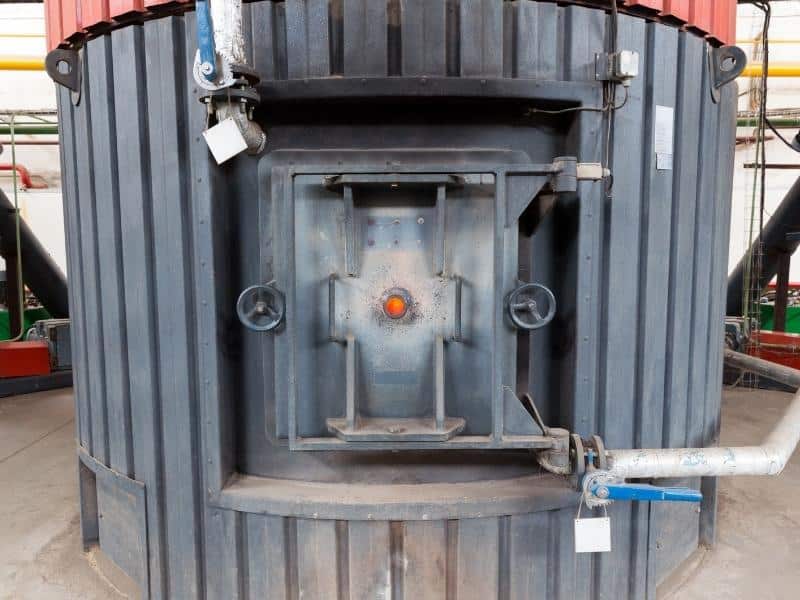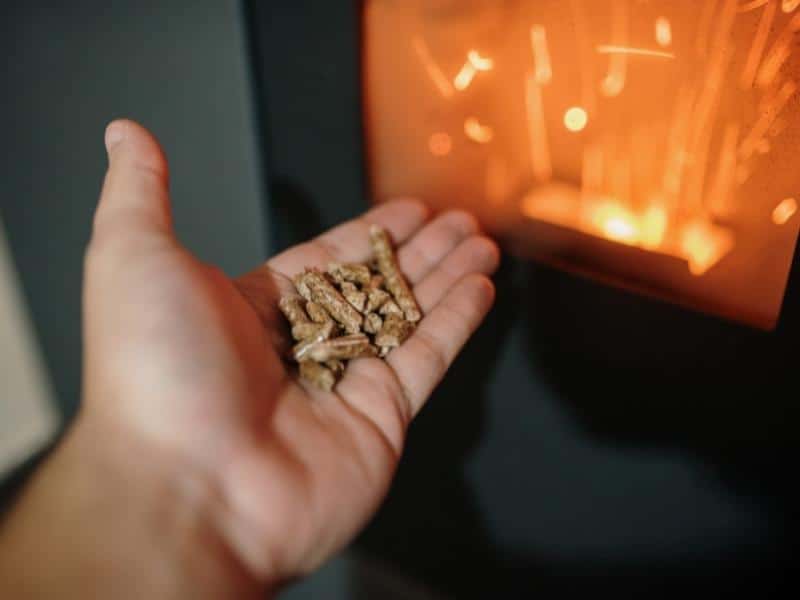If you are trying to be more environmentally conscious, you may have heard of biomass boilers. So what are they and how do they work?
Here is a shortlist of the topics we’ll be covering. Read on to answer all these questions.
- How Biomass Boilers Work
- The Fuels You Can Use
- How Often You Need to Fill It
We will take you through all of the essential workings of a biomass boiler.

How Do Biomass Boilers Work?
Biomass boilers work by burning fuel like wood pellets. This produces heat used to fuel heating systems in your home.
Biomass burners can be used for small-scale residential buildings and larger applications.
They can be a great replacement for traditional natural gas or oil-fueled furnaces. They are carbon neutral, particularly depending on how you choose to fuel them.
Options for Operation – How it works
Fuel is loaded into the combustion chamber with a hopper or by hand. The fuel is burned and the heated gas is used for heating a home or water.
You can choose to have water heated or use hot air heating. Most systems consist of multiple parts to safely use and hold onto the produced heat.
The largest options are fed automatically and can function just like central heating. You can also use them to heat your water.
The smallest forms are simple wood-burning stoves that heat a single room. Some models even have a small boiler to heat water for your home.
Since these systems have many options for fuel, you can choose the best option for your area.
What Fuel Does a Biomass Boiler Use?
Biomass boilers use wood pellets, but there are a number of options. Here is a shortlist of common options.
- Wood pellets
- Wood chips
- Logs
- Sawdust
- Straw
- Wheat husks
- Other waste products
Any combustible material can be used. If you use a hopper system, you will need to stick with wood pellets since they have a uniform size.
If you have a hand-fed system, you can use nearly anything burnable. You may have easier or cheaper access to certain fuels.

Cheap Fuels
For instance, wood from a tree you had to cut down would work well. It will need to dry out before use. Woods with high moisture do not burn as effectively.
If you live in an agricultural area, you may have access to additional fuels. For instance, dried manure burns well.
Many crops also produce waste that can be burned. This includes plant stalks and other inedible parts of crops.
If you have a lot of construction in your area, there may be plenty of excess wood from construction projects. You can save this wood from the landfill and use it for heating your home.
Just be sure that the fuel you are using is safe to burn. Some materials can produce toxic fumes when burned. Always check if you are using something that isn’t made for fuel usage.
How Often Do You Fill Biomass Boilers
You will generally need to fill hand-fed systems daily in the winter and every 2 weeks in the summer. This will depend on your heating needs.
If your system just provides heating for your home, you will only need to fill it daily during the winter. During the warmer summer months, you will be able to put it in standby mode.
Biomass boilers that also serve to heat your home’s water will need to be filled less often in the summer. If your system provides heating and hot water, it will be filled every day during winter.
If your system only heats water, you will likely fill it every week or two depending on your hot water needs. Hot water usage tends to stay pretty consistent aside from holidays.
Hopper Systems
Hoppers allow you to fuel your biomass boiler consistently. By using a hopper, you can have more fuel ready to go.
Depending on the size of your hopper, you may only need to fuel every 2 weeks during the winter. During the summer you may only need to fill it once a month.
Hopper systems do need consistent fuel to work properly. This means you are typically locked into using wood pellets or similar fuel.
You will have to decide for yourself what type of system will work best for your needs.
Single Room Biomass Boilers
Most of this article goes over the larger biomass boiler that can replace a central heating system. While these are great systems, they can take up a lot of space.
If your home can’t fit a whole biomass boiler system, there are options that heat a single room.
Wood-Burning
Wood-burning stoves are the simplest form of a biomass boiler. You can place these in the room you use most often and stay warm.
Some models can even heat water to help make them cheaper to run overall. Wood-burning stoves are typically hand-fed.
These stoves are also the most versatile when it comes to fuel. You can use nearly anything that will fit in the combustion chamber.
Fire-Wood
Firewood is the traditional choice and should be available in your area. Many people offer up firewood from cleared trees so you should be able to find it for a low price.
Since you can use any fuel you like, you can also use any waste wood or other burnable materials. For instance, cleared dry brush is a good choice if you can break it down.
The main downside of wood-burning stoves is that they heat a limited area. At best, they will heat one room of your home.
This can mean they will not work well for families. On cold nights, everyone would need to pile into one room to stay warm.
They are perfect for small homes and open-plan homes. Just be aware that they will not work for a family or replace a central heating system if you want to use more than one room in the winter.




